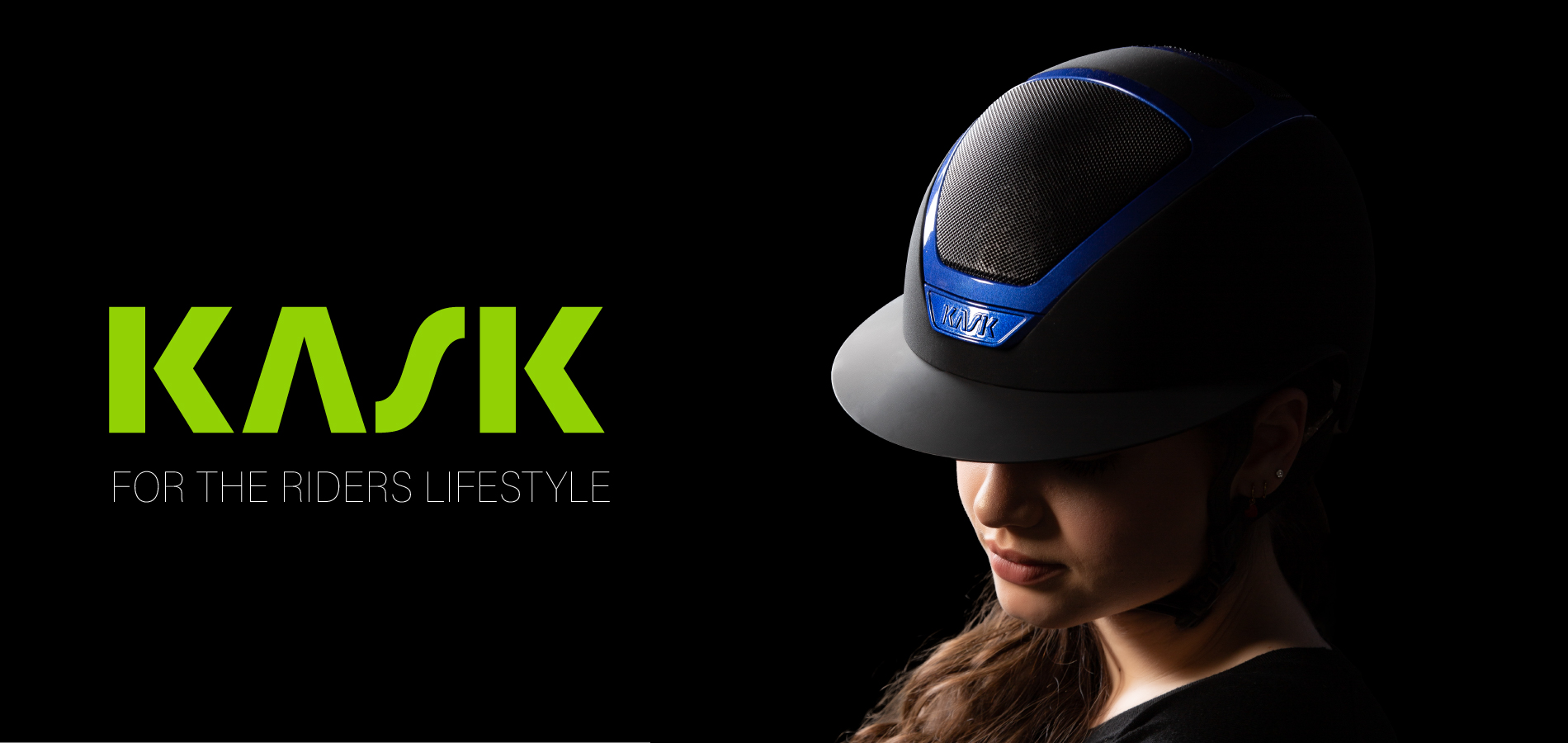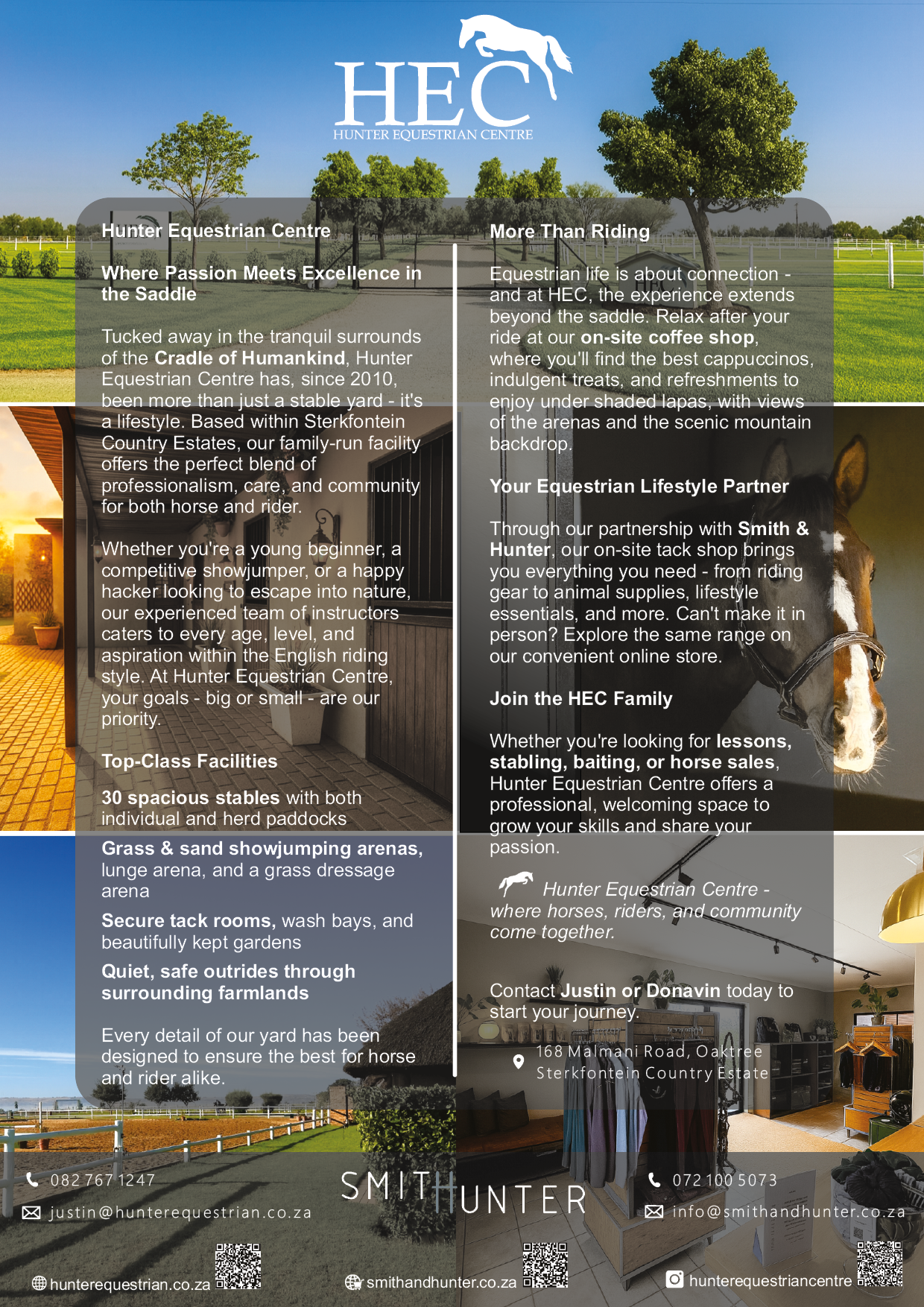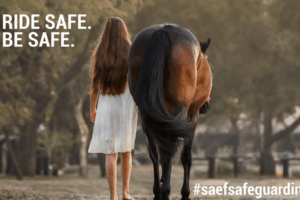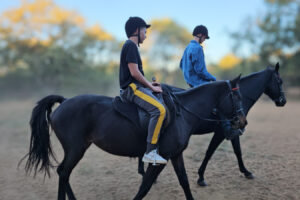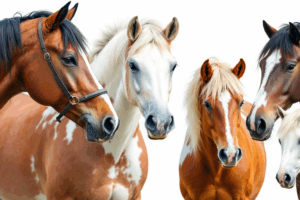For equestrians, rhythm isn’t just about music; it’s an essential aspect of understanding and mastering horse gaits. The sequence of footfalls – the pattern and timing of a horse’s hooves hitting the ground – is the foundation of every movement, providing both stability and elegance in motion.
Whether you’re a rider honing your skills or simply curious about equine biomechanics, a clear understanding of footfall patterns can deepen your appreciation of horse gaits and improve your connection with your horse.
The Basics of Footfalls
A horse’s gaits are categorised by the number of beats they produce and the sequence in which the hooves touch the ground. These movements form the rhythm riders feel, hear, and influence during riding. Let’s explore each gait in detail:
The Walk
The walk is the simplest gait to understand, as it is a steady four-beat rhythm. The sequence is left hind, left front, right hind, and right front. At any moment, two or three hooves are in contact with the ground, creating a stable and deliberate motion. This even footfall pattern makes the walk an ideal gait for beginners and relaxation.
The walk includes various levels of activity, including the collected walk, medium walk, extended walk, or free walk.
The Trot
Often described as a two-beat diagonal gait, the trot is more dynamic. The horse moves its left hind and right front legs together, followed by the right hind and left front legs. Between each beat, there is a moment of suspension when all four hooves are off the ground. The trot’s distinct rhythm and slight bounce make it a challenge to master but rewarding for riders looking to build core strength and balance.
The trot also includes different levels of activity and collection, which the rider can ask for; this includes working trot, collected trot, medium trot, lengthened trot, or extended trot.
The Canter
The canter introduces complexity with its three-beat rhythm and an additional suspension phase. For a right-lead canter, the sequence starts with the left hind leg, followed by the right hind and left front moving together, and ends with the right front leg striking the ground. This gait has a rolling motion that feels smoother than the trot, making it a favourite for covering ground efficiently and gracefully.
Again, the canter can also highlight different levels of activity and collection, such as working canter, collected canter, medium canter, lengthened canter, or extended canter.
The Gallop
The gallop is the horse’s fastest gait and an extended version of the canter, but with four distinct beats. The sequence for a left lead gallop is right hind, left hind, right front, and left front, with a moment of suspension following the final beat. Each hoof strikes the ground separately, allowing for explosive speed and power. Riders must be confident to control the gallop.
Rhythm, Regularity, and Tempo
Every stride a horse takes tells a story, not only through its sequence of footfalls but also through the rhythm, regularity, and tempo of its movement. These three elements are crucial in assessing a horse’s performance, soundness, and suitability for various equestrian disciplines. Let’s break down each aspect:
Rhythm
Rhythm refers to the repeated pattern of beats within a gait. Each gait has its own unique rhythm: the four beats of the walk, the two beats of the trot, the three beats of the canter, and the four beats of the gallop. A horse’s rhythm must remain consistent throughout the gait to ensure fluidity and balance. Irregular rhythm often indicates discomfort, fatigue, or lack of training, making rhythm a cornerstone of equestrian evaluation.
For riders, feeling and maintaining rhythm is vital. Whether riding a dressage test or jumping a course, a steady rhythm helps establish a sense of predictability for both horse and rider, fostering better communication and control.
Regularity
Regularity focuses on the equality of timing and movement within the rhythm. While rhythm ensures the correct number of beats, regularity ensures that each beat is evenly spaced. For example, in a trot, each diagonal pair of legs should strike the ground with equal force and timing. Any disruption in regularity—such as uneven strides or inconsistent beats—can signal physical issues like lameness or improper conditioning.
Regularity is often a hallmark of a well-trained and sound horse. Judges in disciplines such as dressage place significant emphasis on regularity as it reflects the horse’s athleticism and the rider’s ability to maintain harmony.
Tempo
Tempo refers to the speed at which the rhythm is executed. It’s the measure of how quickly the beats occur within a gait. A slower tempo might be appropriate for a relaxed walk, while a quicker tempo is essential for an extended trot or gallop. Importantly, tempo must match the horse’s natural stride length and capabilities to avoid strain or loss of balance.
Finding the ideal tempo for your horse and discipline is an art. While tempo is often dictated by the requirements of an activity – for example, a precise tempo is crucial for show jumping – it must also reflect the horse’s physical comfort and ability.
Why Footfalls Matter
Understanding the sequence of footfalls goes beyond theoretical knowledge; it’s a practical tool for riders. Feeling the rhythm of a horse’s gaits helps riders adjust their aids, refine their balance, and communicate more effectively. For instance, knowing when a horse’s leading leg hits the ground in the canter can influence when to apply cues for changes in lead, direction or speed.
Additionally, recognising irregular footfalls can alert riders to potential lameness or discomfort, making it a crucial aspect of equine care.
How to Practise Feeling Footfalls
Developing an intuitive sense of footfall patterns requires both observation and practice. Spend time watching horses move at different gaits, noting the sequence of their legs. When riding, focus on the rhythm and learn to feel each beat through your seat and hands. Get a friend to video you during transitions.
For a more interactive learning experience, activities like mimicking gaits with a group of people acting as hooves or shaking a bottle of stones when a specific hoof hits the ground can be a fun way to visualise the sequence of movements.
The Rhythm of Partnership
Footfalls aren’t just a mechanical detail; they are the pulse of every ride, the beat of a horse and rider’s partnership. Whether you’re mastering the precise rhythm of a dressage test or galloping freely across open fields, understanding footfalls enhances your connection with your horse and your ability to ride with confidence and precision.



